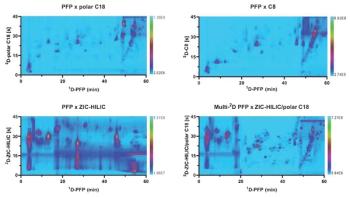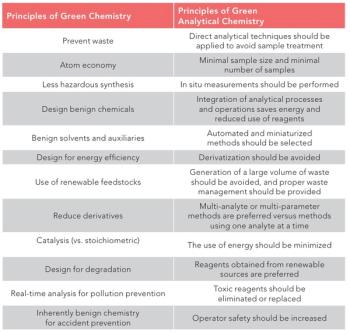
- The Column-10-03-2013
- Volume 9
- Issue 18
Urine Metabolome Database Launched
The Urine Metabolome Database (UMDB) (www.urinemetabolome.ca) containing detailed information on over 3000 metabolites has been launched following the comprehensive quantitative metabolome characterization of urine by scientists at the University of Alberta, Canada.1 The project is part of the on-going Human Metabolome Project launched in 2005 by Genome Canada and Genome Alberta, and has so far received $600 million in funding from the Canadian government.
The Urine Metabolome Database (UMDB) (www.urinemetabolome.ca) containing detailed information on over 3000 metabolites has been launched following the comprehensive quantitative metabolome characterization of urine by scientists at the University of Alberta, Canada.1 The project is part of the on-going Human Metabolome Project launched in 2005 by Genome Canada and Genome Alberta, and has so far received $600 million in funding from the Canadian government.
The Human Metabolome Project2 was set up to build a freely available database of all small molecule metabolites found in human biofluids. David Wishart of the University of Alberta has been working on the project for over seven years, previously studying the metabolome of cerebrospinal fluid (CSF) and blood. Wishart and his team of 20 researchers set out to demonstrate that it was possible to measure hundreds of compounds in urine, while making the data available to the global research community in the form of a searchable on-database. Wishart told The Column: “Our goal with fully characterizing the human urine metabolome was to establish a baseline of what would normally be found (and at what concentrations) in a healthy adult urine specimen.”
Urine has long been favoured as a sample material by metabolomics researchers: Easy to obtain in large volumes, sterile, proteinâfree, but yet chemically complex it provides an ideal “fingerprint” of the body’s metabolic processes. Wishart told The Column that urine diagnosis is not a new concept, rather it has been used for more than 3000 years - in the Middle Ages, most physicians relied on the colour, smell, and in some cases taste of patient urine to make a diagnosis. It is still used today in pregancy tests and kidney function tests, and more recently metabolomic fingerprinting of urine has been suggested in the detection of cancers.3
The study relied heavily on a combination of method development and analysis with computer software design. Wishart stated that data mining software was written to scan thousands of papers, journals, and books to find urinary compounds found or reported by other scientists over the past 100 years. Mass spectrometry (MS), chromatography, and nuclear magnetic resonance (NMR) spectroscopy approaches were also used to analyse urine samples.
Urine was collected from 22 healthy volunteers and analysed using six analytical platforms. Wishart emphasises that there was a great deal of method development involved to allow the identification of hundreds of compounds within the samples. Highâresolution NMR spectroscopy identified 209 compounds (108 unique); gas chromatography–mass spectrometry (GC–MS) identified 179 (89 unique); direct flow injection tandem mass spectrometry (DFI–LC–MS–MS) identified 127 (98 unique); inductively coupled plasma mass spectrometry (ICP–MS) identified 40 (40 unique); high performance liquid chromatography (HPLC) with ultraviolet (UV) identified 6 (6 unique); and HPLC with fluorescence detection (FD) identified 4 (3 unique).
The data collected from the chemical analyses were combined with the literature data mined to build a compendium of all known and measured urine metabolites in human urine. This is housed within the publicly accessible UMDB.
When asked by The Column about the importance of the Human Metabolome Project, Wishat said: “At some level, we liken the work we’ve been doing as similar to what was done for the Human Genome Project.” He expanded: “Geneticists needed the ‘baseline’ DNA sequence for the average human genome. Once that was determined, they could then start discovering all the genetic mutations that caused human disease. As a result, hundreds of disease genes have been discovered and hundreds of new diagnostic or predictive genetic tests have emerged. We think the same thing could happen with urine, especially now that its chemical composition is known.” Whether or not the Human Metabolome Project has the same impact as the Human Genome Project remains to be seen; however, this is yet another step towards the advance of personalized medicine aided by analytical chemistry. - B.D.
References
1. S. Bouatra, F. Aziat, R. Mandal, A.C. Guo, M.R. Wilson, et al. PLoS ONE8(9), e73076.(2013).
2. The Human Metabolome Project
3. Pilot Study Demonstrates Detection of Bladder Cancer with Prototype “Scent Device”, The Column9(17), 9 (2013).
Articles in this issue
about 12 years ago
Market Trends & Analysis: Ion Chromatographyabout 12 years ago
Reversed-Phase LC Isolates Potent Insecticidal Protein From Tarantulaabout 12 years ago
Green Foodomicsabout 12 years ago
On-line Highlightsabout 12 years ago
Tips & Tricks: Evaporative Light Scattering Detection in GPC/SECabout 12 years ago
Silica-Based HPLC Columns — Pore Sizes and Particle Diametersabout 12 years ago
Successfully Translating GC Methods from Helium to Hydrogen Carrier GasNewsletter
Join the global community of analytical scientists who trust LCGC for insights on the latest techniques, trends, and expert solutions in chromatography.




